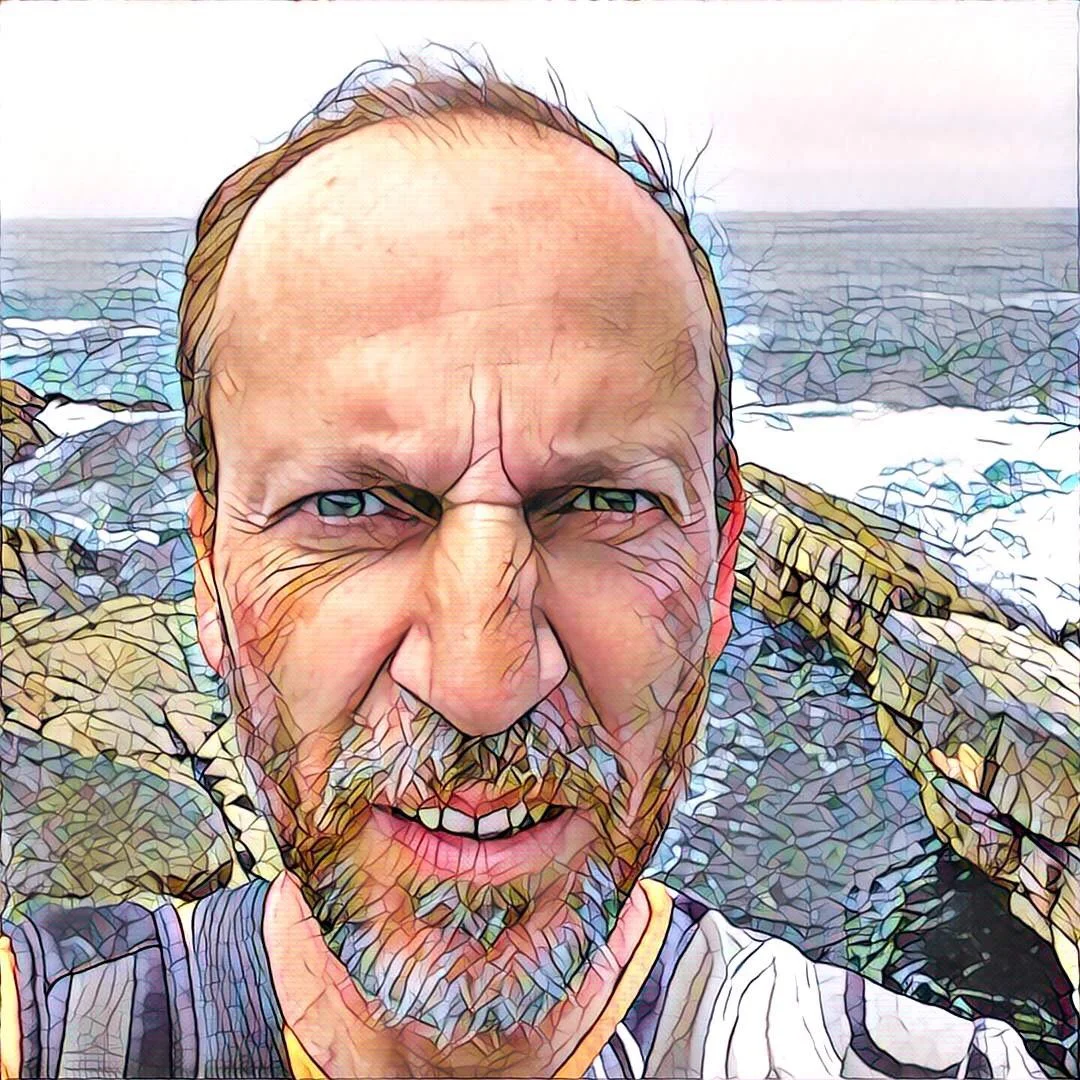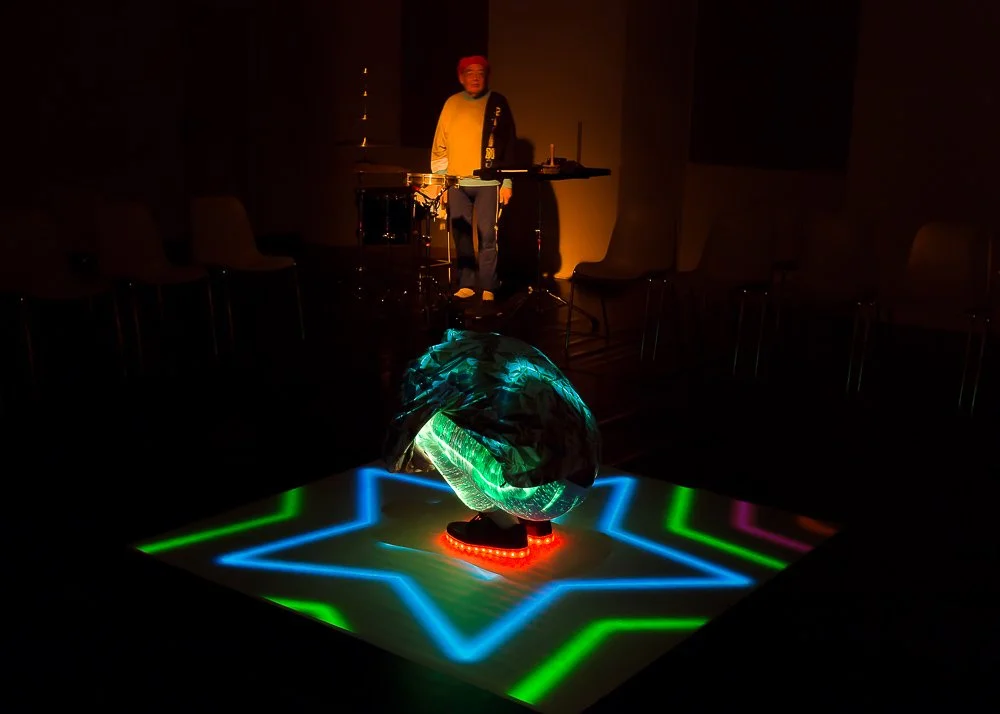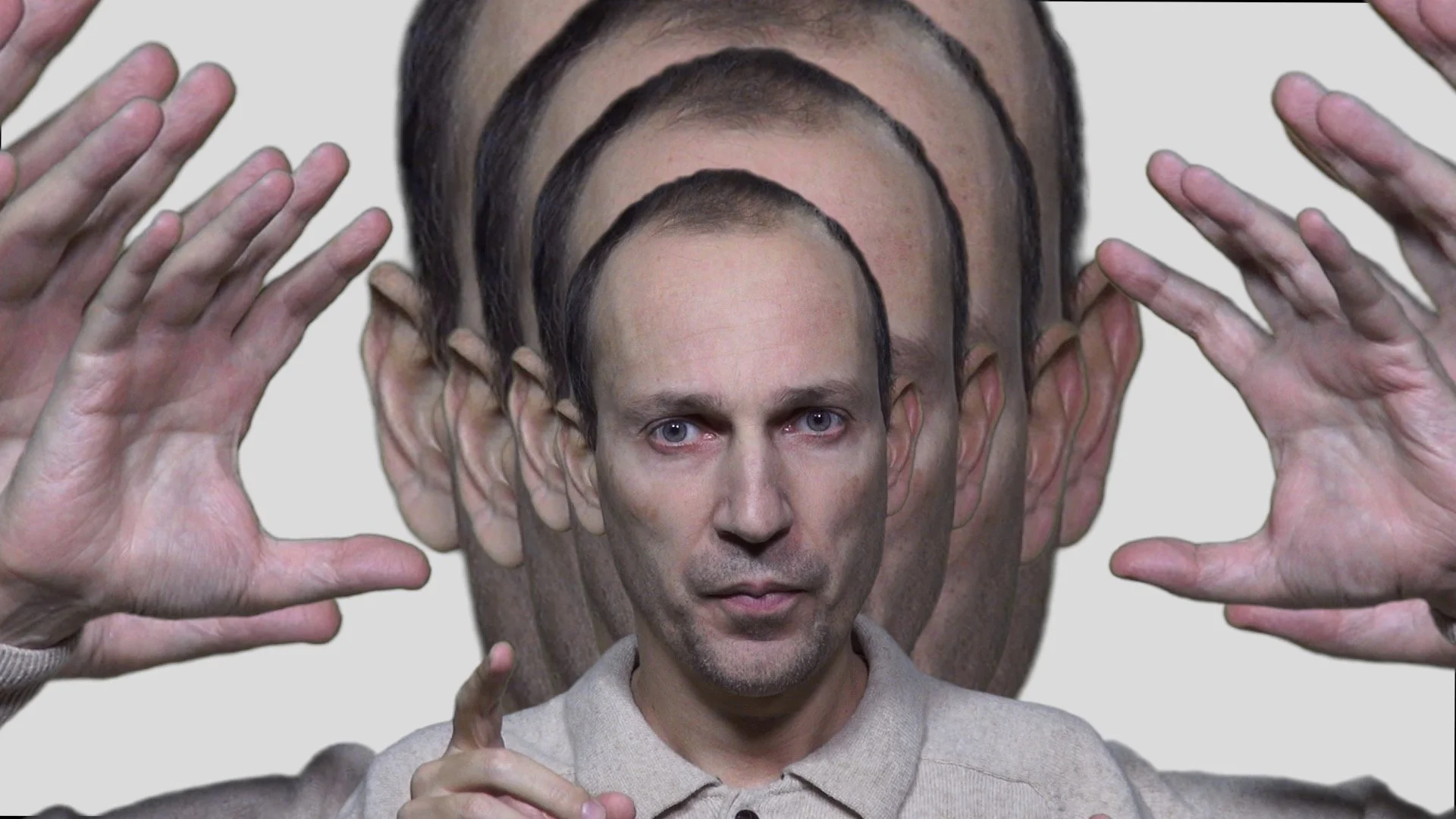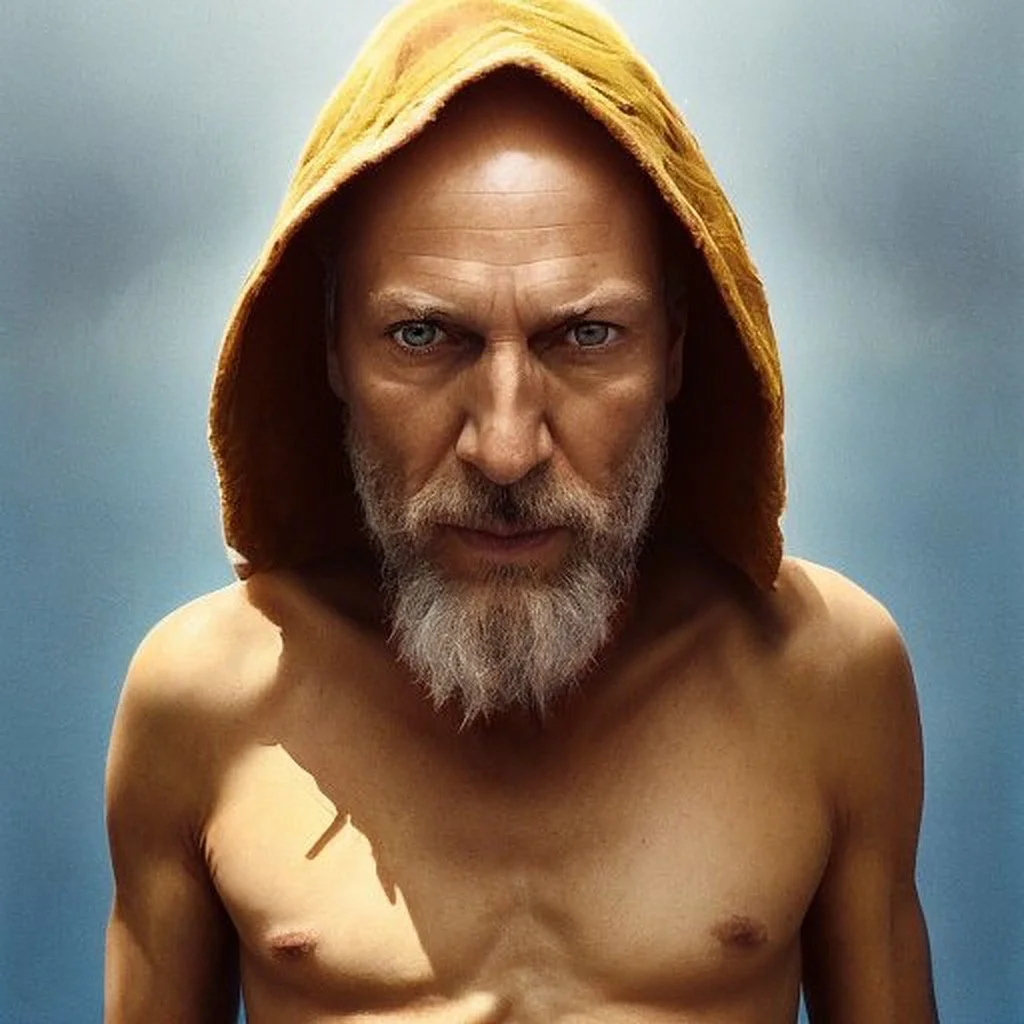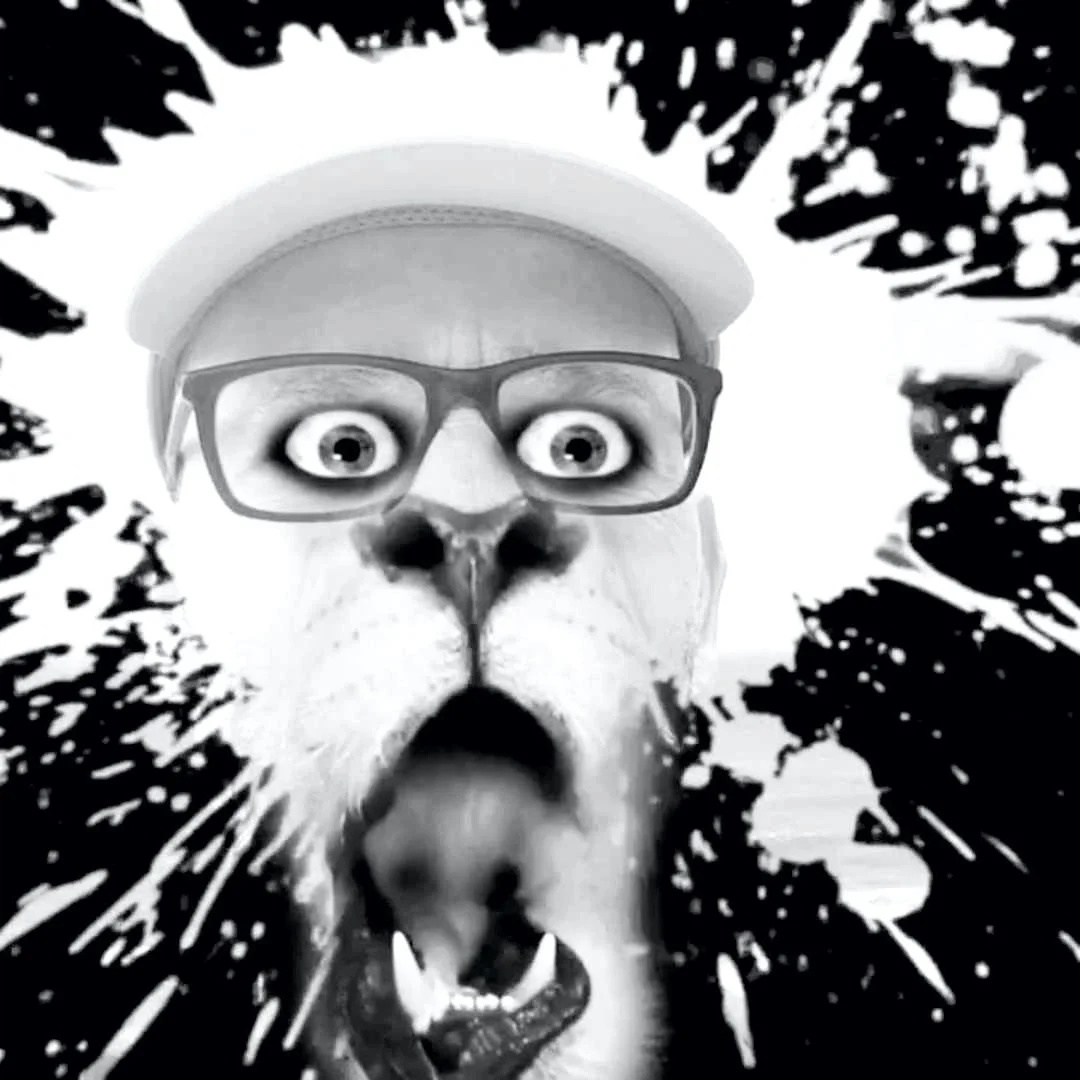Interview with Vasco Diogo
Considering your extensive academic background in communication sciences and sociology alongside your artistic practice, how do you navigate the intersection of theoretical knowledge and creative expression in your projects? Could you discuss how this blend has evolved in your recent works, particularly in how they address complex themes such as hybridity and the human condition in the digital era?
While doing research for my PhD in communication sciences, which I finished in 2008, I got deeply influenced by videoart key figures such as Vito Acconci, Dan Graham, Nam June Paik, Gary Hill and Tony Oursler. All these artists produced works that intersect with fundamental knowledge about what is the ontology of video, its contamination with other media, and its intrinsic experimental vocation - which is inseparable from a philosophy of technology. In all my work I consider that perceptions are concepts and that concepts are perceptions. My artistic practice was influenced by my academic background but my academic research was also influenced by my artistic background. Since 2020 I've been working as a full time artist and this blend has evolved towards a more intuitive approach to creative expression. I'm now finishing a new project where I use Artificial Intelligence, Missing Meaning, that is supposed not to have a fixed unity or paradigm regarding its relation to reality. This new media work is about the question of a fragmented self in the digital era navigating through several layers, from the idea of transparency to the completely fake. I assume myself as the main character of this human condition, often in a humorous way.
Your work extensively explores the boundaries between different media, notably in combining elements of performance, video art, and drawing. Could you elaborate on a specific project that epitomizes your intermedial strategy? What are the philosophical and practical challenges you face when synthesizing these varied artistic languages, and how do you resolve them within your creative process?
Working with different media and exploring boundaries between different media requires a lot of research and several years of practice and experimentation. Sometimes you have to focus on a single medium for some time – as I am now doing with electronic music and poetry – to establish theoretical, practical and technical links to other forms of expression you feel more comfortable with. Combining different artistic languages is always putting yourself in a position of fragility and emotional risk, as if you were understanding the whole universe for the first time. That also involves what is now called an aesthetics of failure.
Animated Drawings, a live performance combining drawing, videoart, poetry and music is still the project that better epitomizes my intermedial strategy. In the beginning of the new millenium I was drawing a lot but also experimenting with the possibilities of live video and real time image manipulation. So I had the idea to combine those media in a single project, adding also live music and poetry. The first texts came from the drawings themselves, as I consider that drawing is a kind of writing. I'm now working on poetry again, spoken word texts with hip-hop influences, and also in electronic music and sound art. It is the beginning of another big intermedial project starting this time only with sound.
With your recent interest in mobile filmmaking, how do you perceive the impact of mobile technology on the traditional artistic landscape, particularly in terms of accessibility, immediacy, and the authenticity of artistic expression? How do you balance the spontaneity and constraints of mobile filmmaking with the depth and rigor of traditional experimental cinema?
I think that mobile filmmaking must be understood in the context of “The Medium is the Message”, to quote Marshall McLuhan. It has its own specificity that transcends the idea of making films with a new instrument. Making art with mobile technology is a revolution only comparable to what video art has introduced in the sixties. Your question is very interesting as accessibility, immediacy and authenticity are shared characteristics of video art and mobile art, which are essentially determined by technology. In my opinion, they introduce a breaking point with what was once called experimental cinema, that is, before the digital convergence we are now facing. Now we are all digital artists! Some of us still pretend to be analogue artists only. For me, working on technological determinations and co-creativity between human and machine is part of the joy of being alive. What that means is that the mobile phone or tablet allows me to be constantly working, wherever I am, expanding and transmitting simultaneously my creative ideas through less mediated processes. But the old media are far from being dead . Every old media was once a new media and anyone working with new technologies knows how important it is to stay grounded with nature, people and organic things in the “oldfashioned way”. When a massive technology change happens it is always important to be accompanied by a proper alphabetization. That is also the artist's role.
As an educator and a practitioner in the fields of video art and experimental cinema, how do you perceive your dual roles influencing and informing each other? Could you discuss how your pedagogical methods might mirror your artistic ethos, particularly in fostering a culture of experimentation and critical thinking among your students?
From 2008 to 2020 I was a cinema teacher at University of Beira Interior. I taught video art and experimental cinema besides other unit courses. At that time I had much less energy to work on my own projects as I lived part of the week in Covilhã and another part in Lisbon. Besides being very tired, the work with the students, specially the tutoring of practical projects, was very fulfilling both on a pedagogical as on a personal level. In both experimental cinema and video art courses, I tried to combine history, theory and technical skills so that the students could experiment with all the roles of filmmaking that are conventionally separated by specialization - image, sound, editing, production, directing, acting and so on. Being very good at only one thing is never being good enough! Also, I always had the privilege of showing and discussing my own works which I think was motivating for them and inspiring for me. The films they made were not supposed to be academic “exercises” but rather finished films that could be exhibited to a public audience, which happened a lot. Besides making the film or the video art, the students always had to make a small paper describing the ideas, concepts, processes, difficulties, etc.. I think that a good educator, with dual roles as you said, is someone who never gets tired of wanting to learn more.
Your work often eschews traditional narrative structures in favor of more abstract and experimental forms. Can you discuss the conceptualization process for projects that challenge narrative norms? How do you decide which experimental elements to employ, and what role does audience interpretation play in your conceptual framework?
Traditional narrative structures essentially feed the so called culture industries where all the effort is convincing the viewer that the discourse is transparent or invisible in order to communicate a message about the world we live in through a moralist lesson and story. Consequently, the story always comes first and then all the production work is done to fulfill the needs of that story within the limits of the “construction of meaning” and the division of labour. Most time narrative norms are challenged within the narrative/industrial system itself and the differences are far from being great. All is still determined by the financing and the circulation of the works. When that difference is no longer only a matter of style you enter the realm of experimental art and more specifically experimental cinema.
There you don't need a narrative, characters, drama, fiction, dialogues, meaning. You don't need to interpret the film as you are supposed to interpret reality. Elements such as light, movement, color, depth, time, speech, sound, structure, process may be the themes of the film itself. This is often called a more abstract cinema but it is in fact more concrete, physical and touchable cinema. And when you are experimenting something new you may have a strong difficulty understanding what you are doing and explaining it in a rational way. Audience interpretation plays an essential role even if it goes from complete rejection and dullness to amazing insights and epiphanies.
Having been recognized extensively within the international festival circuit, in what ways has critical acclaim affected your artistic decisions and visions? Do you find that such recognition reinforces your experimental impulses, or does it impose certain expectations that you feel compelled to navigate or perhaps even resist?
My recognition within the international festival circuit has reinforced the desire to expand freedom and uniqueness in the conceptualization and making. I don't make experimental films regarding contemporary trends or issues but rather following my own vision. That is only possible if you highlight from project to project a radical difference, almost as an obsession. Moreover, I often work in series, which is very time consuming on a daily basis but also on a long term. My most important changes come from an internal and organic process rather than answering to external expectations. On the other hand, It is important for me to broaden the visibility of my work in art exhibitions and live performances and be influenced by that institutional context. In that sense, I'm now again at a turning point.
Given your foundational training in sociology, how do you integrate sociological perspectives into your creative projects, particularly in exploring themes like social identity and the cultural impacts of technology? Can you provide an example of how sociological theory has directly influenced a particular piece of your work?
From a certain perspective art and sociology are mutually exclusive and have nothing to do with each other. By the time I studied sociology, back in the nineties, I remember this was the common assumption when I tried to explain that, in fact, sociological perspectives had a lot to do with making art. Nowadays, some artists, but also critics and curators, seem to be completely driven by the idea that art must be sociological or at least political to have some kind of value. I position myself in a middle ground where every experience and knowledge may be integrated into the creative process but not as some kind of dogma. For me art is not a specialization in social reality as it encompasses a much wider, stranger, unknown, mysterious and deep reality which is not normative nor predictable.
With the project Anexperimentalviralvlog, a collection of video performances directed towards the viewer that were first published on youtube as single episodes, I explored the ideas of truth, identity and meaning by appropriating a popular culture genre: the youtube vlog. In this project, I was mainly influenced by Erving Goffman theories about the presentation of self in everyday life, in other words, how we produce an image of ourselves in social interaction. Goffman's ideas are still very relevant, not only to performance art but also to consider art as life itself.
Reflecting on your artistic journey, how have your thematic focuses and methodologies evolved from your early career to now? Are there particular turning points or projects that have been pivotal in shaping your current artistic outlook and practices?
I started drawing, mainly influenced by raw and primitive art and at the same time doing theatre first at university and then with a collective called Projecto Teatral where I was also a co-creator. The first works with Projecto Teatralwere mainly based on non-sense improvisations, which were a good background for future performances and ideas. Then there were works more related to a contamination between installation and theatre that were also influential for my future works, namely a first video installation I did called Série Y about the idea of an “impossible coreography”. Another turning point was the live video performance Animated Drawings where I explored the ideas of feedback, real time and intermediality. By that time I did several live performances with video and live video in a collaborative way, the more recent called Cervical Kid with four great musicians. From the moment I had my first chroma studio I did several video performances for the camera experimenting with figure and background manipulation, movement and direct address to the viewer. Then I also started doing mobile films with several apps, namely Mixed Movie, Old New Age and others. More recently I started to work on animation, namely with two experimental series: Paint On Paint and Anima. Here and now I pretend to go back to all areas of my previous work expanding intermediality and collaborative processes.
Of all your works, which do you consider most seminal in defining your artistic voice and why? How does this piece encapsulate your overall artistic philosophy, and in what ways do you think it has contributed to or influenced broader dialogues in experimental cinema and intermedial art?
Paint on Paint, a series of eight experimental animation films I did from 2020 to 2022 is the work I consider most seminal in defining my artistic voice. It marks a point of no return regarding working full time on a daily basis in my own studio. It's a frame by frame hand drawn digital animation where each one of the eight films is about a particular brush, or color emulating analogue techniques. The theme is the context that raises the problems such as contamination, closure, social distance and delirium, but it is far from being illustrative. In each of the first seven animations I invited different musicians/sound designers to interpret the images in their own way creating a synaesthetic experience for the viewer.


